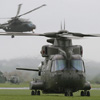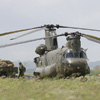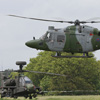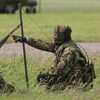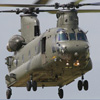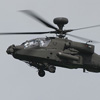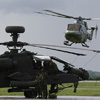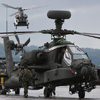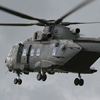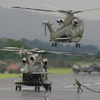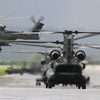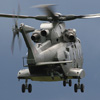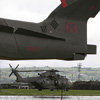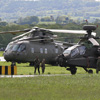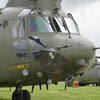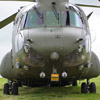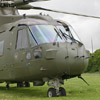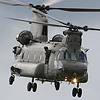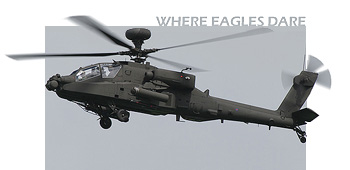
Exercise Eagles Strike 2005 Feature Report
Monday 16th May - Friday 27th May
It isn't everyday your eyes bear witness to a major military exercise. All too often, they are tucked away inside some vast military training area away from prying, curious eyes, but every so often, they become very public indeed. One of these was the recently concluded Exercise Eagles Strike - widely publicised as the largest British Military exercise in the UK of 2005 and UKAR was there.
Words and Pictures by . Additional photography from .
The statistics were mind-boggling, more then 1,200 vehicles, 3,800 soldiers and no less than 40 helicopters from the Army Air Corps and Royal Air Force - including no less than 16 of the Army's latest Apache attack helicopters - took part in the exercise. But let there be no doubt - this really was one of the highlights of the aviation year.
The exercise was led by Colchester-based 16 Air Assault Brigade (AAB) who arrived at RAF St Mawgan in Cornwall in mid-May - their aim to fully test the effectiveness of the soldiers and equipment and fully prove the Apache's ability to operate in the field. In the days leading up to the exercise, roads across the South West of England were clogged with every type of military vehicle imaginable from tank transporters to trucks, from fuel bowsers to ammunition carriers, everything needed to keep a modern Army on the move.
It is understood that the scenario involved two countries - one had invaded the other and 16 AAB had been called in to remove the aggressors and return peace to the region.
St Mawgan was used as the jump point to start the operations, and troops were sent into Dartmoor in the first few days before action moved eastwards towards Somerset and the massive Salisbury Plain Training Area.
Helicopters used several light aircraft fields including Eaglescott and Dunkeswell as forward fuelling and arming points before flying on to take on the rebel forces, a role being played by 2 Para, which is part of 16 AAB, who were also equipped with a small number of Hinds and Hips, or Gazelles and Lynxes as we know them. They were based at the Royal Navy relief airfield of Merryfield, but attacks by the Apaches on May 19 and 20 saw them retreat back as far as Keevil.
Within hours of 16 AAB taking the airfield, RAF Merlins and Chinooks as well as vast numbers of Lynx, Gazelles and of course Apaches arrived at the station, as the Army turned the airfield into a vast tent complex.
All around were cargo vehicles, antennas, camouflaged tents and hundreds of troops and even SAM sites all awaiting the enemy counter attack. Transport helicopters were parked at the Eastern-end of the field, while the still camera shy Apaches remained parked in a long row at the Western end. During a week of operations, the Apaches would regularly seen escorting the heavy choppers as well as patrolling the nearby A303, tracking unknowing with their state-of-art-systems.
A week later, the Brigade launched a offensive from Merryfield against Keevil with Royal Navy Sea King AEW helicopters coming into play as command and control aircraft putting the enemy into disarray before the final attacks on the Salisbury Plain began.
On May 22, the local residents of Merryfield were invited into the airfield, allowing them to get a close-up view of some of the equipment which had kept them awake over previous nights joining them were a number of UKAR members who were offered a fascinating insight into the role and equipment of the modern British Army, now we just want it to happen all over again.
Since the completion of the exercise, 9 Regiment Army Air Corps has now been confirmed as available for operations. Brig Ed Butler, 16 AAB commander told UKAR: "The Apache Attack Helicopter will give the British Army a genuine advantage over contemporary and future adversaries in the battlefield air space."

